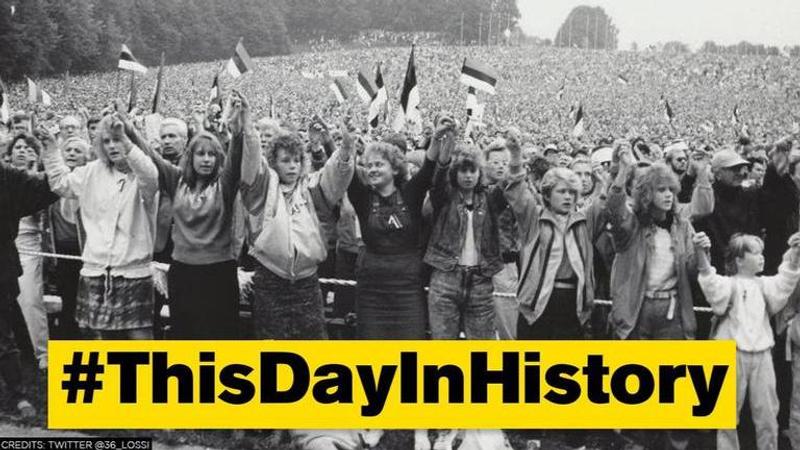Published 16:24 IST, September 6th 2020
Soviet Union officially recognised independence of Baltic States on this day in 1991
On this day, i.e. September 6, back in 1991 Soviet Union officially recognised independence for three unbowed Baltic states- Estonia, Latvia and Lithuania.

Advertisement
Post World War I, the USSR allowed the Baltic people to establish independent states and on this day, i.e. September 6, back in 1991 Soviet Union officially recognised independence for Estonia, Latvia and Lithuania. It was half a century after carving up the heart of Europe in secret with Nazi Germany that the USSR recognised the independence of the three unbowed Baltic states. The decision made by Soviet President Mikhail S Gorbachev was the first concrete episode in the breakup of the Soviet state that he was struggling mightily to prevent.
📌 ON THIS DAY
— Lossi 36 (@36_lossi) September 6, 2020
📅 On September 6, 1991, the #SovietUnion recognized the independence of the #Baltic States - forcibly incorporated into the Union in 1940. This was the first action by the Republic leaders recognizing the emerging disintegration of the Soviet Union. #OTD pic.twitter.com/x8LEjM7bZV
The Baltic states were first occupied and annexed by Nazi Germany. However, after their annexation, the USSR reoccupied the Baltic territories in 1944 and maintained control there until the states regained their independence nearly 40 years later in the aftermath of the Soviet coup of 1991.
Between 1940 and 1987, the Soviet Union carried out a process of 'Sovietization' which aimed to weaken the national identities of the Baltic people. From large-scale industrialisation to mass deportation, the Soviet Union directed attacks on culture, religion and freedom of expression. The Soviets made large capital investments for energy resources and the manufacture of industrial and agricultural products.
Departure of Baltic republics ‘inevitable’
Postwar socioeconomic policies transformed all three countries from predominantly rural societies into largely urbanized countries. However, by the 1970s the Baltic area had emerged as a hotbed of anti-Soviet dissent. On several occasions, riots and unsanctioned anti-regime demonstrations occurred. The attempts to reform the system during the second half of the 1980s under the guidance of Gorbachev created a new situation in the Baltic lands.
It was in 1988 that mass movements for change emerged in each of the Baltic republics: the Popular Front of Estonia, the Popular Front of Latvia and the Lithuanian Movement for Reconstruction. A year after, their elected representatives at the Congress of People’s Deputies in Moscow formally raised the question of the illegality of the incorporation of the Baltic states into the USSR. Elections in 1990, then resulted in pro-independence majorities in all three baltic legislatures.
(Image: @1111truth777/Twitter)
In the wake of the campaign and elections, Gorbachev’s government had privately concluded that the departure of the Baltic republics had become “inevitable”. The process also contributed to the dissolution of the Soviet Union, setting a precedent for other Soviet republics to secede from the USSR. On September 6, 1991, USSR then finally recognised the independence of the three Baltic States, following which troops were withdrawn from the region.
16:25 IST, September 6th 2020





